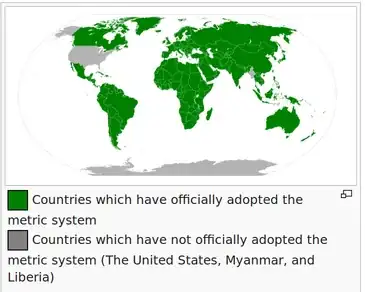Neither.
Since you are asking this question, you are probably working on a system which uses both (or a system which will be used in different countries). This means that you should be able to store distances expressed in feet or meters.
In your database, do have not one, but two columns: one for the value, the other one for the unit. This would make it straightforward to store and retrieve the measurements, without doing the conversion under the hood (which is usually not what the user wants). Double conversion is especially problematic (for instance meters to feet to meters), since rounding errors will accumulate.
Note that you will probably need to support even more units than that. In the context of houses, I imagine that meters are not very precise: rooms will rather be measured in centimeters, if not millimeters (for electrical installations, it may matter). This makes this approach much more interesting than, say, having two columns, one for feet, another one for meters; with the approach I suggested, adding units won't lead to any schema change.
If you need to either sort the data (for instance larger houses appear first) or filter it (for example get only the houses larger than one hundred square meters), this is not enough: you would need a third column which contains a value converted to a common unit. It doesn't matter which unit exactly is used here, since those values will only be used for ordering and filtering.
